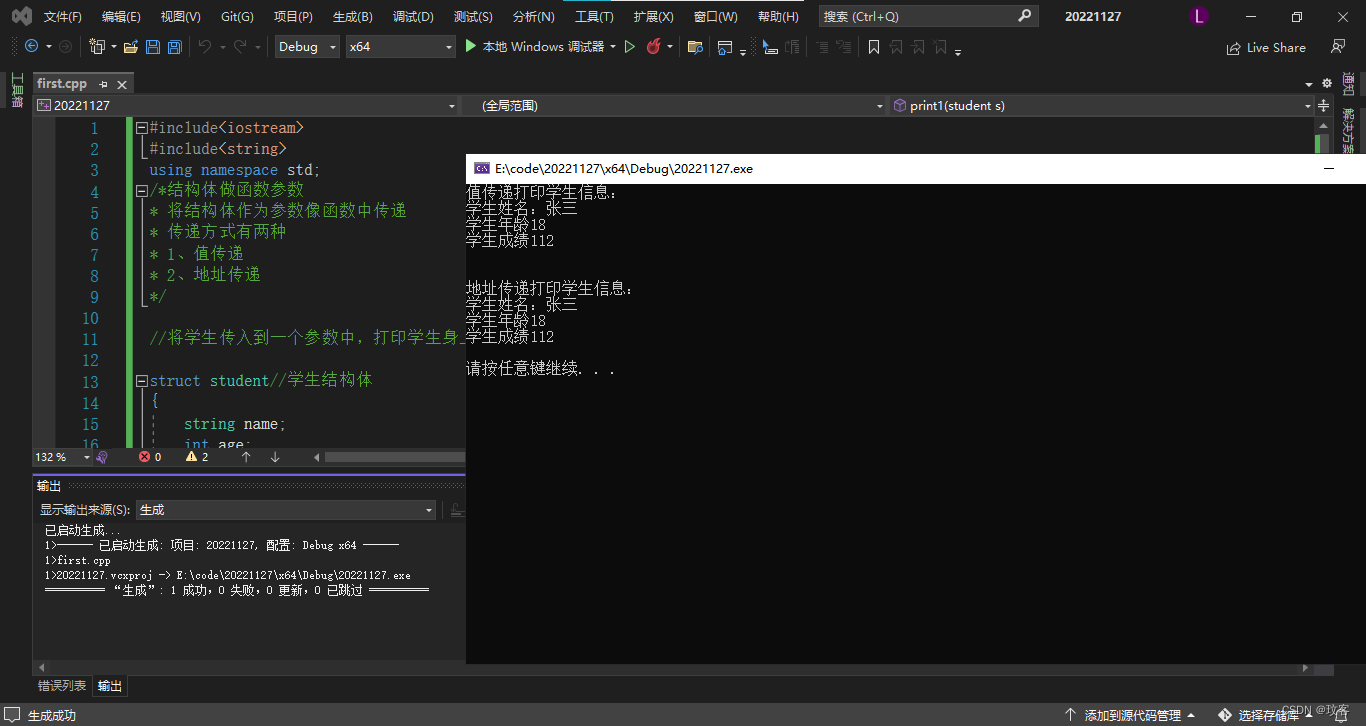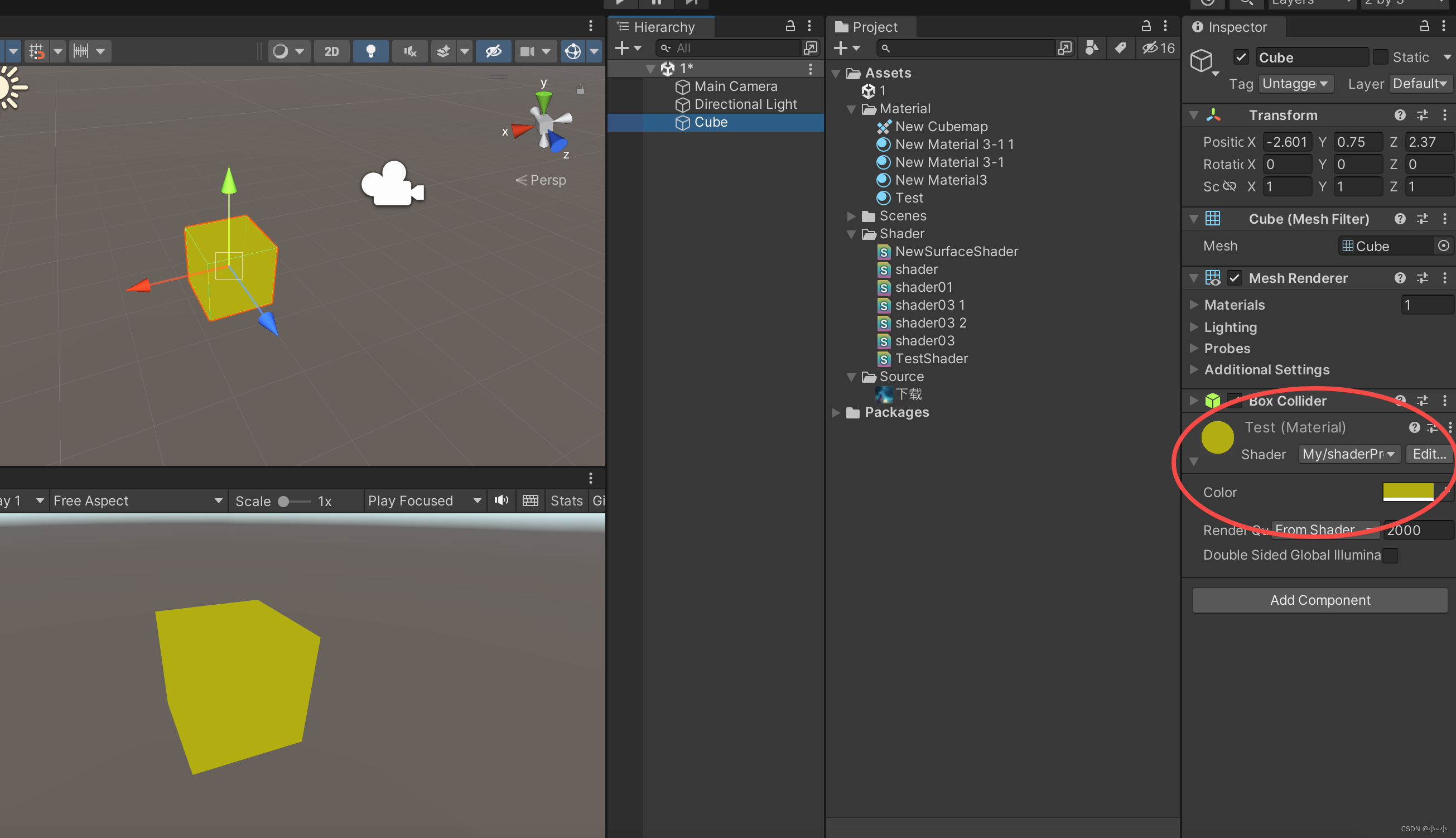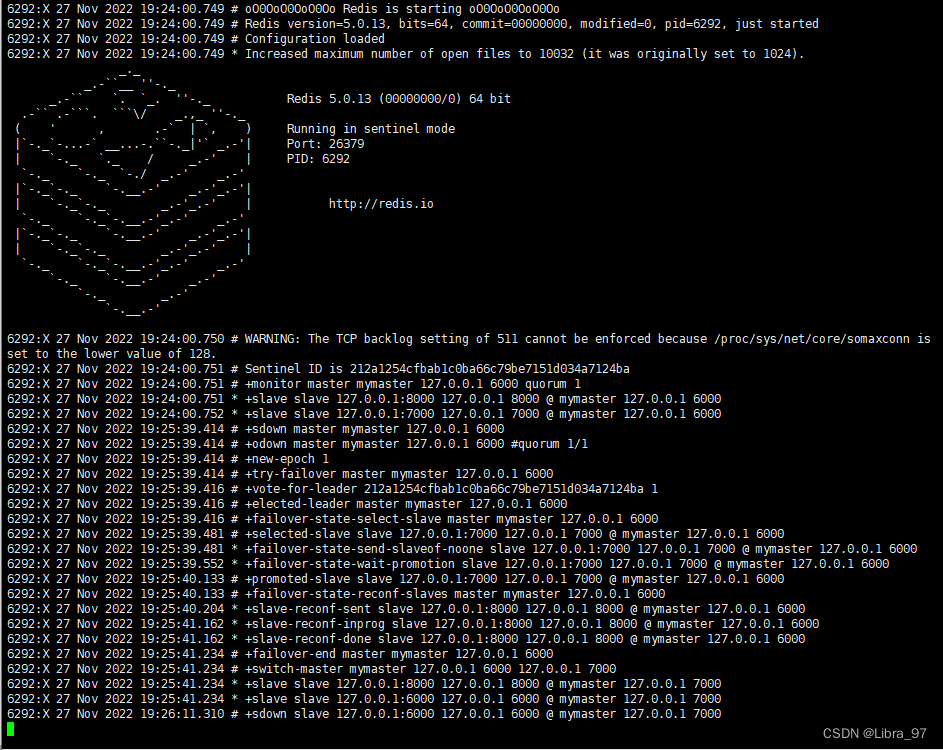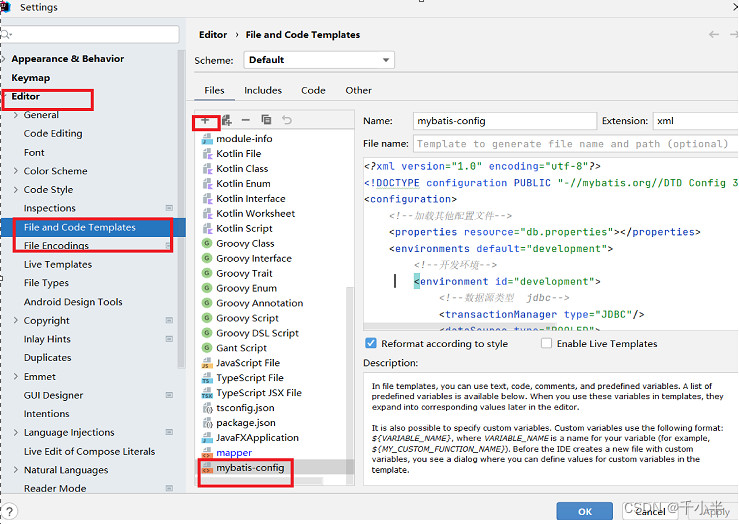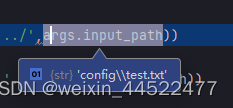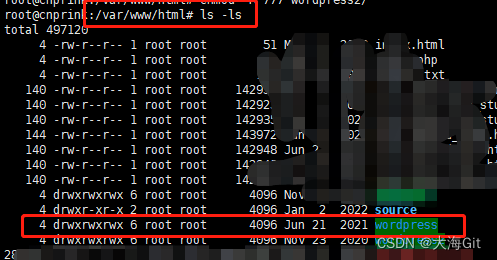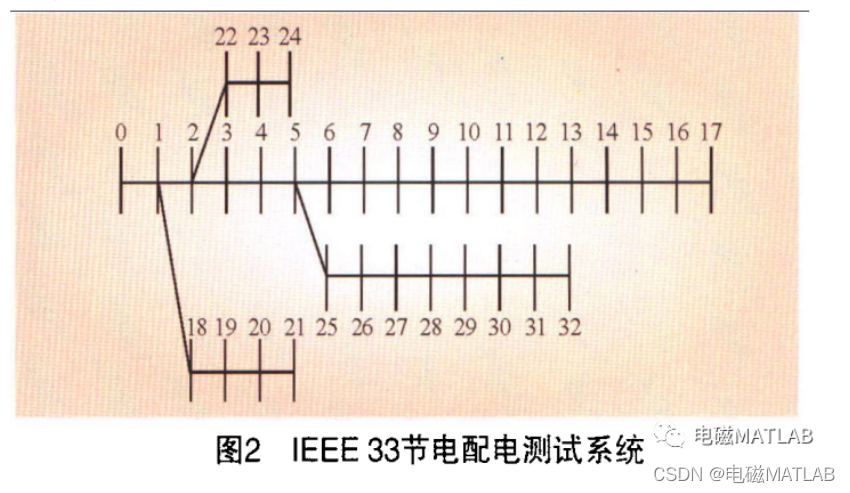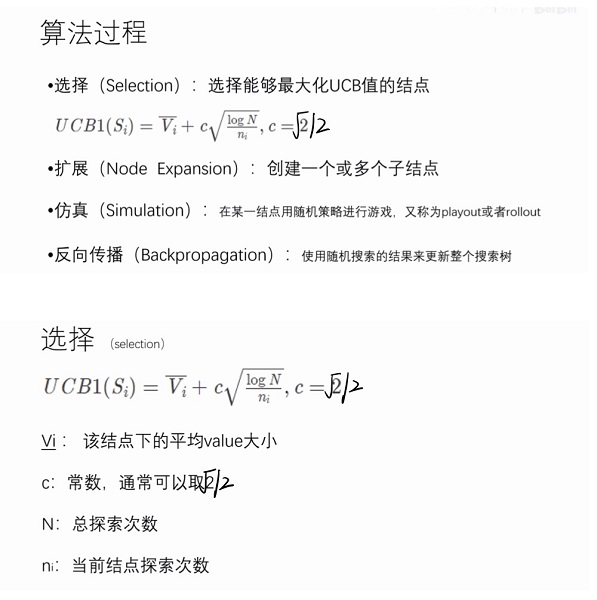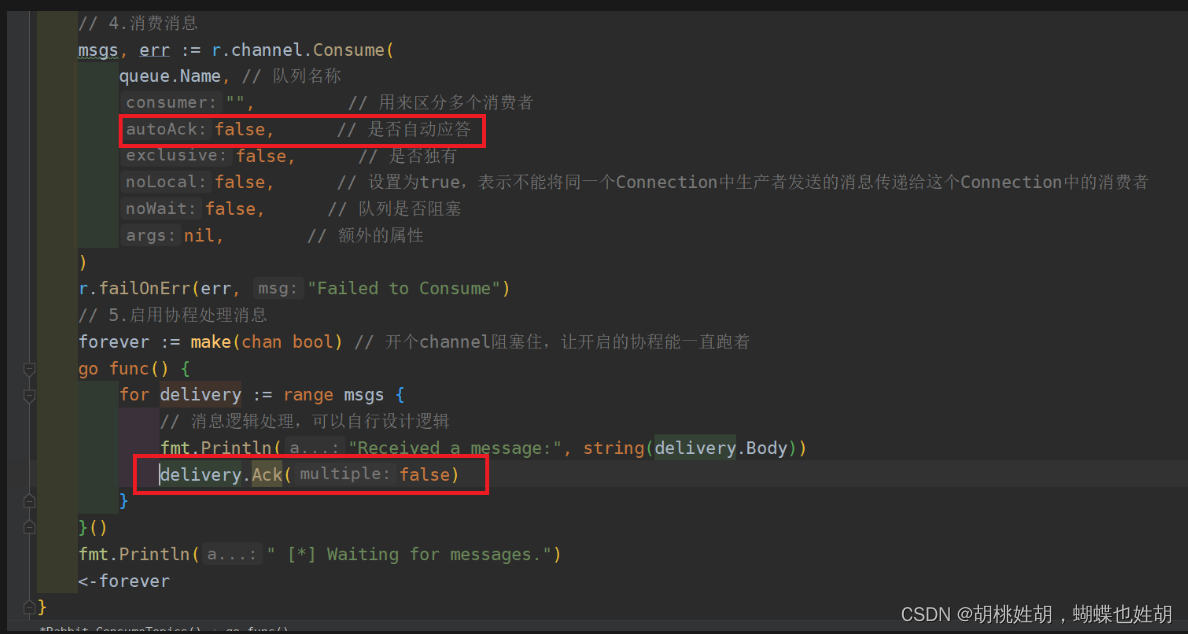一、RDD 的起源
在 RDD 出现之前, 当时 MapReduce 是比较主流的, 而 MapReduce 如何执行流程如下:

多个 MapReduce 任务之间只能通过磁盘来进行传递数据,很明显的效率低下,再来看 RDD 的处理方式:

整个过程是共享内存的, 而不需要将中间结果存放在分布式文件系统中,这种方式可以在保证容错的前提下, 提供更多的灵活, 更快的执行速度。
二、RDD 的特点
RDD 不仅是数据集, 也是编程模型,提供了上层 API, 同时 RDD 的 API 和 jdk8 中 stream 流对集合运算的 API 非常类似,同样也都是各算子,如下:
textFile.filter(StringUtils.isNotBlank) //过滤空内容
.flatMap(_.split(" ")) //根据空格拆分
.map((_, 1)) // 构建新的返回
.foreach(s => println(s._1 + " " + s._2)) //循环
RDD 的算子大致分为两类:
- Transformation 转换操作, 例如
map flatMap filter等。 - Action 动作操作, 例如
reduce collect show等
注意:执行 RDD 的时候会进行惰性求值,执行到转换操作的时候,并不会立刻执行,直到遇见了 Action 操作,才会触发真正的执行。
创建 RDD
RDD 有三种创建方式,可以通过本地集合直接创建,也可以通过读取外部数据集来创建,还可以通过其它的 RDD 衍生而来:
首先声明 SparkContext:
- scala:
val conf = new SparkConf().setAppName("spark").setMaster("local[*]")
val sc = new SparkContext(conf)
- java
SparkConf conf = new SparkConf().setAppName("spark").setMaster("local[*]");
JavaSparkContext sc = new JavaSparkContext(conf);
- python
from pyspark import SparkConf, SparkContext, StorageLevel
import findspark
if __name__ == '__main__':
findspark.init()
conf = SparkConf().setAppName('spark').setMaster('local[*]')
sc = SparkContext(conf=conf)
1. 通过集合创建
- scala
val rdd1 = sc.parallelize(Seq("abc", "abc", "fff dd", "ee,pp", ""))
//指定分区
val rdd2 = sc.parallelize(Seq("abc", "abc", "fff dd", "ee,pp", ""), 5)
- java
JavaRDD<String> rdd1 = sc.parallelize(Arrays.asList("abc", "abc", "fff dd", "ee,pp", ""));
//指定分区
JavaRDD<String> rdd2 = sc.parallelize(Arrays.asList("abc", "abc", "fff dd", "ee,pp", ""), 5);
- python
rdd1 = sc.parallelize(["abc", "abc", "fff dd", "ee,pp", ""])
#
rdd2 = sc.parallelize(["abc", "abc", "fff dd", "ee,pp", ""], 5)
2. 通过文件创建
- scala
//读取本地文件
val rdd3 = sc.textFile("D:/test/spark/input3/words.txt")
//读取本地文件,指定分区
val rdd4 = sc.textFile("D:/test/spark/input3/words.txt", 5)
//读取 HDFS 文件
val rdd5 = sc.textFile("hdfs://test/spark/input3/words.txt")
//读取文件同时拿到文件名
val rdd6 = sc.textFile("hdfs://test/spark/input3/")
- java
//读取本地文件
JavaRDD<String> rdd3 = sc.textFile("D:/test/spark/input3/words.txt");
//读取本地文件,指定分区
JavaRDD<String> rdd4 = sc.textFile("D:/test/spark/input3/words.txt", 5);
//读取 HDFS 文件
JavaRDD<String> rdd5 = sc.textFile("hdfs://test/spark/input3/words.txt");
//读取文件同时拿到文件名
JavaRDD<String> rdd6 = sc.textFile("hdfs://test/spark/input3/");
- python
# 读取本地文件
rdd3 = sc.textFile("D:/test/spark/input3/words.txt")
#读取本地文件,指定分区
rdd4 = sc.textFile("D:/test/spark/input3/words.txt", 5)
#读取 HDFS 文件
rdd5 = sc.textFile("hdfs://test/spark/input3/words.txt")
#读取文件同时拿到文件名
rdd6 = sc.textFile("hdfs://test/spark/input3/")
下面对相关常用算子进行演示。
三、Transformations 算子
1. map
将 RDD 中的数据 一对一 的转为另一种形式:
例如:
- scala:
val num = sc.parallelize(Seq(1, 2, 3, 4, 5))
println(
num.map(_+1).collect().toList
)
- java:
JavaRDD<Integer> num = sc.parallelize(Arrays.asList(1, 2, 3, 4, 5));
System.out.println(
num.map(i -> i + 1).collect()
);
- python:
num = sc.parallelize((1, 2, 3, 4, 5))
print(
num.map(lambda i:i+1).collect()
)

2. flatMap
和 Map 算子类似,但是 FlatMap 是一对多,并都转化为一维数据:
例如:
- scala:
val text = sc.parallelize(Seq("abc def", "hello word", "dfg,okh", "he,word"))
println(
text.flatMap(_.split(" ")).flatMap(_.split(",")).collect().toList
)
- java:
JavaRDD<String> text = sc.parallelize(Arrays.asList("abc def", "hello word", "dfg,okh", "he,word"));
System.out.println(
text.flatMap(s ->Arrays.asList(s.split(" ")).iterator())
.flatMap(s ->Arrays.asList(s.split(",")).iterator())
.collect()
);
- python:
text = sc.parallelize(("abc def", "hello word", "dfg,okh", "he,word"))
print(
text.flatMap(lambda s: s.split(" ")).flatMap(lambda s: s.split(",")).collect()
)

3. filter
过滤掉不需要的内容:
例如:
- scala:
val text = sc.parallelize(Seq("hello", "hello", "word", "word"))
println(
text.filter(_.equals("hello")).collect().toList
)
- java:
JavaRDD<String> text = sc.parallelize(Arrays.asList("hello", "hello", "word", "word"));
System.out.println(
text.filter(s -> Objects.equals(s,"hello"))
.collect()
);
- python:
text = sc.parallelize(("hello", "hello", "word", "word"))
print(
text.filter(lambda s: s == 'hello').collect()
)

4. mapPartitions
和 map 类似,针对整个分区的数据转换,拿到的是每个分区的集合:
例如:
- scala:
val text = sc.parallelize(Seq("hello", "hello", "word", "word"), 2)
println(
text.mapPartitions(iter => {
iter.map(_ + "333")
}).collect().toList
)
- java:
JavaRDD<String> text = sc.parallelize(Arrays.asList("hello", "hello", "word", "word"), 2);
System.out.println(
text.mapPartitions(iter -> {
List<String> list = new ArrayList<>();
iter.forEachRemaining(s -> list.add(s+"333"));
return list.iterator();
}).collect()
);
- python:
text = sc.parallelize(("hello", "hello", "word", "word"), 2)
def partition(par):
tmpArr = []
for s in par:
tmpArr.append(s + "333")
return tmpArr
print(
text.mapPartitions(partition).collect()
)

5. mapPartitionsWithIndex
和 mapPartitions 类似, 只是在函数中增加了分区的 Index :
例如:
- scala:
val text = sc.parallelize(Seq("hello", "hello", "word", "word"), 2)
println(
text.mapPartitionsWithIndex((index, iter) => {
println("当前分区" + index)
iter.map(_ + "333")
}, true).collect().toList
)
- java:
JavaRDD<String> text = sc.parallelize(Arrays.asList("hello", "hello", "word", "word"), 2);
System.out.println(
text.mapPartitionsWithIndex((index, iter) -> {
System.out.println("当前分区" + index);
List<String> list = new ArrayList<>();
iter.forEachRemaining(s -> list.add(s + "333"));
return list.iterator();
}, true).collect()
);
- python:
text = sc.parallelize(("hello", "hello", "word", "word"), 2)
def partition(index, par):
print("当前分区" + str(index))
tmpArr = []
for s in par:
tmpArr.append(s + "333")
return tmpArr
print(
text.mapPartitionsWithIndex(partition).collect()
)

6. mapValues
只能作用于 Key-Value 型数据, 和 Map 类似, 也是使用函数按照转换数据, 不同点是 MapValues 只转换 Key-Value 中的 Value:
例如:
- scala:
val text = sc.parallelize(Seq("abc", "bbb", "ccc", "dd"))
println(
text.map((_, "v" + _))
.mapValues(_ + "66")
.collect().toList
)
- java:
JavaRDD<String> text = sc.parallelize(Arrays.asList("abc", "bbb", "ccc", "dd"));
System.out.println(
text.mapToPair(s -> new Tuple2<>(s, "v" + s))
.mapValues(v -> v + "66").collect()
);
- python:
text = sc.parallelize(("abc", "bbb", "ccc", "dd"))
print(
text.map(lambda s: (s, "v" + s)).mapValues(lambda v: v + "66").collect()
)

7. sample
可以从一个数据集中抽样出来一部分, 常用作于减小数据集以保证运行速度, 并且尽可能少规律的损失:
第一个参数为withReplacement, 意为是否取样以后是否还放回原数据集供下次使用, 简单的说,如果这个参数的值为 true, 则抽样出来的数据集中可能会有重复。
第二个参数为fraction, 意为抽样的比例。
第三个参数为seed, 随机数种子, 用于 Sample 内部随机生成下标,一般不指定,使用默认值。
例如:
- scala:
val num = sc.parallelize(Seq(1, 2, 3, 4, 5, 6, 7, 8, 9, 10))
println(
num.sample(true,0.6,2)
.collect().toList
)
- java:
JavaRDD<Integer> num = sc.parallelize(Arrays.asList(1, 2, 3, 4, 5, 6, 7, 8, 9, 10));
System.out.println(
num.sample(true, 0.6, 2).collect()
);
- python:
num = sc.parallelize((1, 2, 3, 4, 5, 6, 7, 8, 9, 10))
print(
num.sample(True, 0.6, 2).collect()
)

8. union
两个数据并集,类似于数据库的 union :
例如:
- scala:
val text1 = sc.parallelize(Seq("aa", "bb"))
val text2 = sc.parallelize(Seq("cc", "dd"))
println(
text1.union(text2).collect().toList
)
- java:
JavaRDD<String> text1 = sc.parallelize(Arrays.asList("aa", "bb"));
JavaRDD<String> text2 = sc.parallelize(Arrays.asList("cc", "dd"));
System.out.println(
text1.union(text2).collect()
);
- python:
text1 = sc.parallelize(("aa", "bb"))
text2 = sc.parallelize(("cc", "dd"))
print(
text1.union(text2).collect()
)

9. join,leftOuterJoin,rightOuterJoin
两个(key,value)数据集,根据 key 取连接、左连接、右连接,类似数据库中的连接:
例如:
- scala:
val s1 = sc.parallelize(Seq("1,3", "2,6", "3,8", "4,2"))
val s2 = sc.parallelize(Seq("1,小明", "2,小张", "3,小李", "4,小红", "5,张三"))
val s3 = s1.map(s => (s.split(",")(0), s.split(",")(0)))
val s4 = s2.map(s => (s.split(",")(0), s.split(",")(1)))
println(s3.join(s4).collectAsMap)
println(s3.leftOuterJoin(s4).collectAsMap)
println(s3.rightOuterJoin(s4).collectAsMap)
- java:
JavaRDD<String> s1 = sc.parallelize(Arrays.asList("1,3", "2,6", "3,8", "4,2"));
JavaRDD<String> s2 = sc.parallelize(Arrays.asList("1,小明", "2,小张", "3,小李", "4,小红", "5,张三"));
JavaPairRDD<String, String> s3 = s1.mapToPair(s -> new Tuple2<>(s.split(",")[0], s.split(",")[1]));
JavaPairRDD<String, String> s4 = s2.mapToPair(s -> new Tuple2<>(s.split(",")[0], s.split(",")[1]));
System.out.println(s3.join(s4).collectAsMap());
System.out.println(s3.leftOuterJoin(s4).collectAsMap());
System.out.println(s3.rightOuterJoin(s4).collectAsMap());
- python:
s1 = sc.parallelize(("1,3", "2,6", "3,8", "4,2"))
s2 = sc.parallelize(("1,小明", "2,小张", "3,小李", "4,小红", "5,张三"))
s3 = s1.map(lambda s:(s.split(",")[0], s.split(",")[0]))
s4 = s2.map(lambda s:(s.split(",")[0], s.split(",")[1]))
print(s3.join(s4).collectAsMap())
print(s3.leftOuterJoin(s4).collectAsMap())
print(s3.rightOuterJoin(s4).collectAsMap())

10. intersection
获取两个集合的交集 :
例如:
- scala:
val s1 = sc.parallelize(Seq("abc", "dfe", "hello"))
val s2 = sc.parallelize(Seq("fgh", "nbv", "hello", "word", "jkl", "abc"))
println(
s1.intersection(s2).collect().toList
)
- java:
JavaRDD<String> s1 = sc.parallelize(Arrays.asList("abc", "dfe", "hello"));
JavaRDD<String> s2 = sc.parallelize(Arrays.asList("fgh", "nbv", "hello", "word", "jkl", "abc"));
System.out.println(
s1.intersection(s2).collect()
);
- python:
s1 = sc.parallelize(("abc", "dfe", "hello"))
s2 = sc.parallelize(("fgh", "nbv", "hello", "word", "jkl", "abc"))
print(
s1.intersection(s2).collect()
)

11. subtract
获取差集,a - b ,取 a 集合中 b 集合没有的元素:
例如:
- scala:
val s1 = sc.parallelize(Seq("abc", "dfe", "hello"))
val s2 = sc.parallelize(Seq("fgh", "nbv", "hello", "word", "jkl", "abc"))
println(
s1.subtract(s2).collect().toList
)
- java:
JavaRDD<String> s1 = sc.parallelize(Arrays.asList("abc", "dfe", "hello"));
JavaRDD<String> s2 = sc.parallelize(Arrays.asList("fgh", "nbv", "hello", "word", "jkl", "abc"));
System.out.println(
s1.subtract(s2).collect()
);
- python:
s1 = sc.parallelize(("abc", "dfe", "hello"))
s2 = sc.parallelize(("fgh", "nbv", "hello", "word", "jkl", "abc"))
print(
s1.subtract(s2).collect()
)

12. distinct
元素去重,是一个需要 Shuffled 的操作:
例如:
- scala:
val s1 = sc.parallelize(Seq("abc", "abc", "hello", "hello", "word", "word"))
println(
s1.distinct().collect().toList
)
- java:
JavaRDD<String> s1 = sc.parallelize(Arrays.asList("abc", "abc", "hello", "hello", "word", "word"));
System.out.println(
s1.distinct().collect()
);
- python:
s1 = sc.parallelize(("abc", "abc", "hello", "hello", "word", "word"))
print(
s1.distinct().collect()
)

13. reduceByKey
只能作用于 Key-Value 型数据,根据 Key 分组生成一个 Tuple,然后针对每个组执行 reduce 算子,传入两个参数,一个是当前值,一个是局部汇总,这个函数需要有一个输出, 输出就是这个 Key 的汇总结果,是一个需要 Shuffled 的操作:
例如:
- scala:
val s1 = sc.parallelize(Seq("abc", "abc", "hello", "hello", "word", "word"))
println(
s1.map((_, 1))
.reduceByKey(Integer.sum)
.collectAsMap
)
- java:
JavaRDD<String> s1 = sc.parallelize(Arrays.asList("abc", "abc", "hello", "hello", "word", "word"));
System.out.println(
s1.mapToPair(s -> new Tuple2<>(s, 1))
.reduceByKey(Integer::sum)
.collectAsMap()
);
- python:
s1 = sc.parallelize(("abc", "abc", "hello", "hello", "word", "word"))
print(
s1.map(lambda s: (s, 1))
.reduceByKey(lambda v1, v2: v1 + v2)
.collectAsMap()
)

14. groupByKey
只能作用于 Key-Value 型数据,根据 Key 分组, 和 ReduceByKey 有点类似, 但是 GroupByKey 并不求聚合, 只是列举 Key 对应的所有 Value,是一个需要 Shuffled 的操作。
GroupByKey 和 ReduceByKey 不同,因为需要列举 Key 对应的所有数据, 所以无法在 Map 端做 Combine, 所以 GroupByKey 的性能并没有 ReduceByKey 好:
例如:
- scala:
val s1 = sc.parallelize(Seq("abc", "abc", "hello", "hello", "word", "word"))
println(
s1.map((_, 1))
.groupByKey()
.collectAsMap
)
- java:
JavaRDD<String> s1 = sc.parallelize(Arrays.asList("abc", "abc", "hello", "hello", "word", "word"));
System.out.println(
s1.mapToPair(s -> new Tuple2<>(s, 1))
.groupByKey()
.collectAsMap()
);
- python:
s1 = sc.parallelize(("abc", "abc", "hello", "hello", "word", "word"))
print(
s1.map(lambda s: (s, 1))
.reduceByKey()
.collectAsMap()
)

15. combineByKey
对数据集按照 Key 进行聚合,groupByKey, reduceByKey 的底层都是 combineByKey
参数:
createCombiner 将 Value 进行初步转换
mergeValue 在每个分区把上一步转换的结果聚合
mergeCombiners 在所有分区上把每个分区的聚合结果聚合
partitioner 可选, 分区函数
mapSideCombiner 可选, 是否在 Map 端 Combine
serializer 序列化器
例如,求取每个人的分数的平均值:
- scala:
val s1 = sc.parallelize(Seq("小明:15.5", "小明:13.3", "张三:14.4", "张三:37.6", "李四:95.9", "李四:45.4"))
println(
s1.map(s => (s.split(":")(0), s.split(":")(1).toDouble))
.combineByKey(
score => (score, 1),
(c: (Double, Int), newScore: Double) => (c._1 + newScore, c._2 + 1),
(d1: (Double, Int), d2: (Double, Int)) => (d1._1 + d2._1, d1._2 + d2._2)
).map(t => (t._1, t._2._1 / t._2._2))
.collectAsMap
)
- java:
JavaRDD<String> s1 = sc.parallelize(Arrays.asList("小明:15.5", "小明:13.3", "张三:14.4", "张三:37.6", "李四:95.9", "李四:45.4"));
System.out.println(
s1.mapToPair(s -> new Tuple2<>(s.split(":")[0], Double.parseDouble(s.split(":")[1])))
.combineByKey(
(Function<Double, Tuple2<Double, Integer>>) score -> new Tuple2(score, 1),
(Function2<Tuple2<Double, Integer>, Double, Tuple2<Double, Integer>>) (c, newScore) -> new Tuple2<>(c._1 + newScore, c._2 + 1),
(Function2<Tuple2<Double, Integer>, Tuple2<Double, Integer>, Tuple2<Double, Integer>>) (d1, d2) -> new Tuple2<>(d1._1 + d2._1, d1._2 + d2._2))
.mapToPair(t -> new Tuple2(t._1, t._2._1 / t._2._2))
.collectAsMap()
);
- python:
s1 = sc.parallelize(("小明:15.5", "小明:13.3", "张三:14.4", "张三:37.6", "李四:95.9", "李四:45.4"))
print(
s1.map(lambda s: (s.split(":")[0], float(s.split(":")[1])))
.combineByKey(lambda score: (score, 1),
lambda c, newScore: (c[0] + newScore, c[1] + 1),
lambda d1, d2: (d1[0] + d2[0], d1[1] + d2[1]))
.map(lambda t: (t[0], t[1][0] / t[1][1]))
.collectAsMap()
)

16. cogroup
多个 RDD 协同分组, 将多个 RDD 中 Key 相同的 Value 分组:
例如:
- scala:
val s1 = sc.parallelize(Seq("1,3", "2,6", "3,8", "4,2"))
val s2 = sc.parallelize(Seq("1,小明", "2,小张", "3,小李", "4,小红", "5,张三"))
val s3 = s1.map(s => (s.split(",")(0), s.split(",")(1)))
val s4 = s2.map(s => (s.split(",")(0), s.split(",")(1)))
println(
s3.cogroup(s4).collectAsMap
)
- java:
JavaRDD<String> s1 = sc.parallelize(Arrays.asList("1,3", "2,6", "3,8", "4,2"));
JavaRDD<String> s2 = sc.parallelize(Arrays.asList("1,小明", "2,小张", "3,小李", "4,小红", "5,张三"));
JavaPairRDD<String, String> s3 = s1.mapToPair(s -> new Tuple2<>(s.split(",")[0], s.split(",")[1]));
JavaPairRDD<String, String> s4 = s2.mapToPair(s -> new Tuple2<>(s.split(",")[0], s.split(",")[1]));
System.out.println(
s3.cogroup(s4).collectAsMap()
);
- python:
s1 = sc.parallelize(("1,3", "2,6", "3,8", "4,2"))
s2 = sc.parallelize(("1,小明", "2,小张", "3,小李", "4,小红", "5,张三"))
s3 = s1.map(lambda s: (s.split(",")[0], s.split(",")[1]))
s4 = s2.map(lambda s: (s.split(",")[0], s.split(",")[1]))
print(
s3.cogroup(s4).collectAsMap()
)

17. sortBy ,sortByKey
数据排序,同 sortByKey ,但普通的 RDD 没有sortByKey, 只有 Key-Value 的 RDD 才有:
参数
func通过这个函数返回要排序的字段
ascending是否升序
numPartitions分区数
例如:
- scala:
val s1 = sc.parallelize(Seq("1,3", "2,6", "3,8", "4,2"))
val s2 = s1.map(s => (s.split(",")(0), s.split(",")(1).toInt))
println(
s2.sortBy(_._2,false)
.collectAsMap()
)
println(
s2.sortByKey(false).collectAsMap()
)
- java:
JavaRDD<String> s1 = sc.parallelize(Arrays.asList("1,3", "2,6", "3,8", "4,2"));
System.out.println(
s1.map(s -> new Tuple2<>(s.split(",")[0], Integer.parseInt(s.split(",")[1])))
.sortBy(t -> t._2, false, 1)
.collect()
);
System.out.println(
s1.mapToPair(s -> new Tuple2<>(s.split(",")[0], Integer.parseInt(s.split(",")[1])))
.sortByKey(false)
.collect()
);
- python:
s1 = sc.parallelize(("1,3", "2,6", "3,8", "4,2"))
s2 = s1.map(lambda s:(s.split(",")[0],int(s.split(",")[1])))
print(
s2.sortBy(lambda t:t[1],False)
.collectAsMap()
)
print(
s2.sortByKey(False)
.collectAsMap()
)

18. repartition,coalesce
repartition:重新分区,coalesce:减少分区,如果新的分区数量比原分区数大, 必须 Shuffled, 否则重分区无效,repartition 和 coalesce 的不同就在于 coalesce 可以控制是否 Shuffle,repartition 是一个 Shuffled 操作。
例如:
- scala:
var p1 = sc.parallelize(Seq("abc", "abc", "fff dd", "ee,pp", ""))
println(p1.getNumPartitions)
p1 = p1.repartition(5)
println(p1.getNumPartitions)
p1 = p1.coalesce(3)
println(p1.getNumPartitions)
- java:
JavaRDD<String> p1 = sc.parallelize(Arrays.asList("abc", "abc", "fff dd", "ee,pp", ""));
System.out.println(p1.getNumPartitions());
p1 = p1.repartition(5);
System.out.println(p1.getNumPartitions());
p1 = p1.coalesce(3);
System.out.println(p1.getNumPartitions());
- python:
p1 = sc.parallelize(("abc", "abc", "fff dd", "ee,pp", ""))
print(p1.getNumPartitions)
p1.repartition(5)
print(p1.getNumPartitions)
p1.coalesce(3)
print(p1.getNumPartitions)
四、Action 算子
1. reduce
对整个结果集规约, 最终生成一条数据, 是整个数据集的汇总。
reduce 和 reduceByKey 完全不同, reduce 是一个 action, 并不是 Shuffled 操作,本质上 reduce 就是现在每个 partition 上求值, 最终把每个 partition 的结果再汇总。
例如:
- scala:
var p1 = sc.parallelize(Seq(1, 2, 3, 4, 6))
println(
p1.reduce((_+_))
)
- java:
JavaRDD<Integer> p1 = sc.parallelize(Arrays.asList(1, 2, 3, 4, 6));
System.out.println(
p1.reduce(Integer::sum)
);
- python:
p1 = sc.parallelize((1, 2, 3, 4, 6))
print(
p1.reduce(lambda i1, i2: i1 + i2)
)

2. collect
以数组的形式返回数据集中所有元素。
例如:
- scala:
var p1 = sc.parallelize(Seq(1, 2, 3, 4, 6))
println(
p1.collect()
)
- java:
JavaRDD<Integer> p1 = sc.parallelize(Arrays.asList(1, 2, 3, 4, 6));
System.out.println(
p1.collect()
);
- python:
p1 = sc.parallelize((1, 2, 3, 4, 6))
print(
p1.collect()
)

3. count
数据元素个数:
例如:
- scala:
var p1 = sc.parallelize(Seq(1, 2, 3, 4, 6))
println(
p1.count()
)
- java:
JavaRDD<Integer> p1 = sc.parallelize(Arrays.asList(1, 2, 3, 4, 6));
System.out.println(
p1.count()
);
- python:
p1 = sc.parallelize((1, 2, 3, 4, 6))
print(
p1.count()
)

4. first
返回第一个元素:
例如:
- scala:
var p1 = sc.parallelize(Seq(1, 2, 3, 4, 6))
println(
p1.first()
)
- java:
JavaRDD<Integer> p1 = sc.parallelize(Arrays.asList(1, 2, 3, 4, 6));
System.out.println(
p1.first()
);
- python:
p1 = sc.parallelize((1, 2, 3, 4, 6))
print(
p1.first()
)

5. countByKey
求得整个数据集中 Key 以及对应 Key 出现的次数:
例如:
- scala:
val s1 = sc.parallelize(Seq("abc", "abc", "hello", "hello", "word", "word"))
println(
s1.map((_,1)).countByKey()
)
- java:
JavaRDD<String> s1 = sc.parallelize(Arrays.asList("abc", "abc", "hello", "hello", "word", "word"))
System.out.println(
s1.mapToPair(s -> new Tuple2<>(s, 1)).countByKey()
);
- python:
s1 = sc.parallelize(("abc", "abc", "hello", "hello", "word", "word"))
print(
s1.map(lambda s: (s, 1)).countByKey()
)

6. take
返回前 N 个元素:
例如:
- scala:
val s1 = sc.parallelize(Seq("abc", "abc", "hello", "hello", "word", "word"))
println(
s1.take(3)
)
- java:
JavaRDD<String> s1 = sc.parallelize(Arrays.asList("abc", "abc", "hello", "hello", "word", "word"));
System.out.println(
s1.take(3)
);
- python:
s1 = sc.parallelize(("abc", "abc", "hello", "hello", "word", "word"))
print(
s1.take(3)
)

7. saveAsTextFile
将结果存入 path 对应的目录中:
例如:
- scala:
val s1 = sc.parallelize(Seq("abc", "abc", "hello", "hello", "word", "word"))
s1.saveAsTextFile("D:/test/output/text/")
- java:
JavaRDD<String> s1 = sc.parallelize(Arrays.asList("abc", "abc", "hello", "hello", "word", "word"));
s1.saveAsTextFile("D:/test/output/text/");
- python:
s1 = sc.parallelize(("abc", "abc", "hello", "hello", "word", "word"))
s1.saveAsTextFile("D:/test/output/text/")



